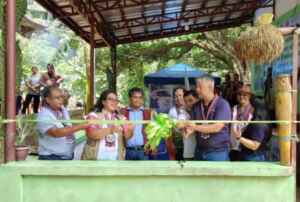EMPOWERING THE FILIPINO LANGUAGE CLASSROOM
Anilyn F. Paniteo
Teaching Filipino in today’s educational landscape presents significant challenges. One of the foremost difficulties for educators is capturing the interest of students who often view English as the more relevant and appealing language. As the dominant language of the internet and global communication, English has overshadowed Filipino, making it harder for students to appreciate the richness and importance of their native language. Many Filipino learners perceive English as crucial for academic and professional success due to its prevalence in media, technology, and international discourse.
As Tsui and Tollefson (2006) note, English has become a global lingua franca, employed as the medium of instruction, communication, and diplomacy even in non-English-speaking countries. This widespread use of English can lead to a diminished enthusiasm for learning Filipino, as students may struggle to see its immediate value in their daily lives or future careers. This situation poses a significant challenge for educators dedicated to preserving and promoting the Filipino language and culture.
The challenge of engaging students in learning Filipino amidst the overwhelming presence of English raises important questions about how we can reframe the value of our native language in a contemporary context. If students view English as more immediately relevant due to its dominance in media and technology, how might we shift their perspective to see Filipino as equally vital and enriching? Could integrating Filipino with modern digital platforms or connecting its study to current cultural trends offer new ways to capture students’ interest?
Exploring these questions might reveal innovative approaches that not only highlight the importance of Filipino but also bridge the gap between tradition and modernity, ensuring that the language remains a vibrant and valued part of students’ lives. These questions invite us to reconsider our teaching strategies and seek creative ways to make Filipino language relevant in the digital age. How can we leverage the same technologies that amplify English to celebrate and elevate Filipino? For instance, integrating Filipino into popular digital platforms, such as social media, apps, and online content, might provide students with a new appreciation for their native language.
By creating engaging, interactive content that resonates with their interests and daily experiences, we can demonstrate the practical and cultural significance of Filipino in ways that are both innovative and meaningful.
Furthermore, connecting Filipino studies with contemporary issues and global discussions can help students see the language as a tool for exploring and expressing complex ideas. Introducing projects that involve analyzing modern Filipino literature, exploring the language’s role in current social movements, or using it to engage in global dialogues about cultural diversity could bridge the gap between traditional and modern uses of the language.
These approaches not only make learning Filipino more relevant but also empower students to use their native
language as a means of participating in broader conversations. Ultimately, the goal is to cultivate a learning environment where Filipino is not seen as a mere academic subject but as a living, dynamic part of students’ lives. By creatively integrating the language into their digital and cultural world, we can foster a deeper connection and pride in Filipino.
The challenge of making Filipino language resonate in a globalized world can be met with innovation and a renewed commitment to celebrating and preserving our linguistic heritage. In doing so, we ensure that Filipino remains not just a subject to be learned, but a vital and vibrant part of students’ identities and futures. In embracing these approaches, we remind ourselves and our students that the true value of Filipino lies in its ability to connect us to our past, inform our present, and inspire our future.
BRIDGING THE LINGUISTIC DIVIDE
July 21, 2024
Educator's Corner
ENHANCING EARLY LITERACY AND NUMERACY: ELLN RE-ECHO LAC SESSION FOR KINDER TO GRADE 3 TEACHERS
May 3, 2025
THE EFFECTS OF PARENTAL INVOLVEMENT ON STUDENT’S BEHAVIOR
March 22, 2025





